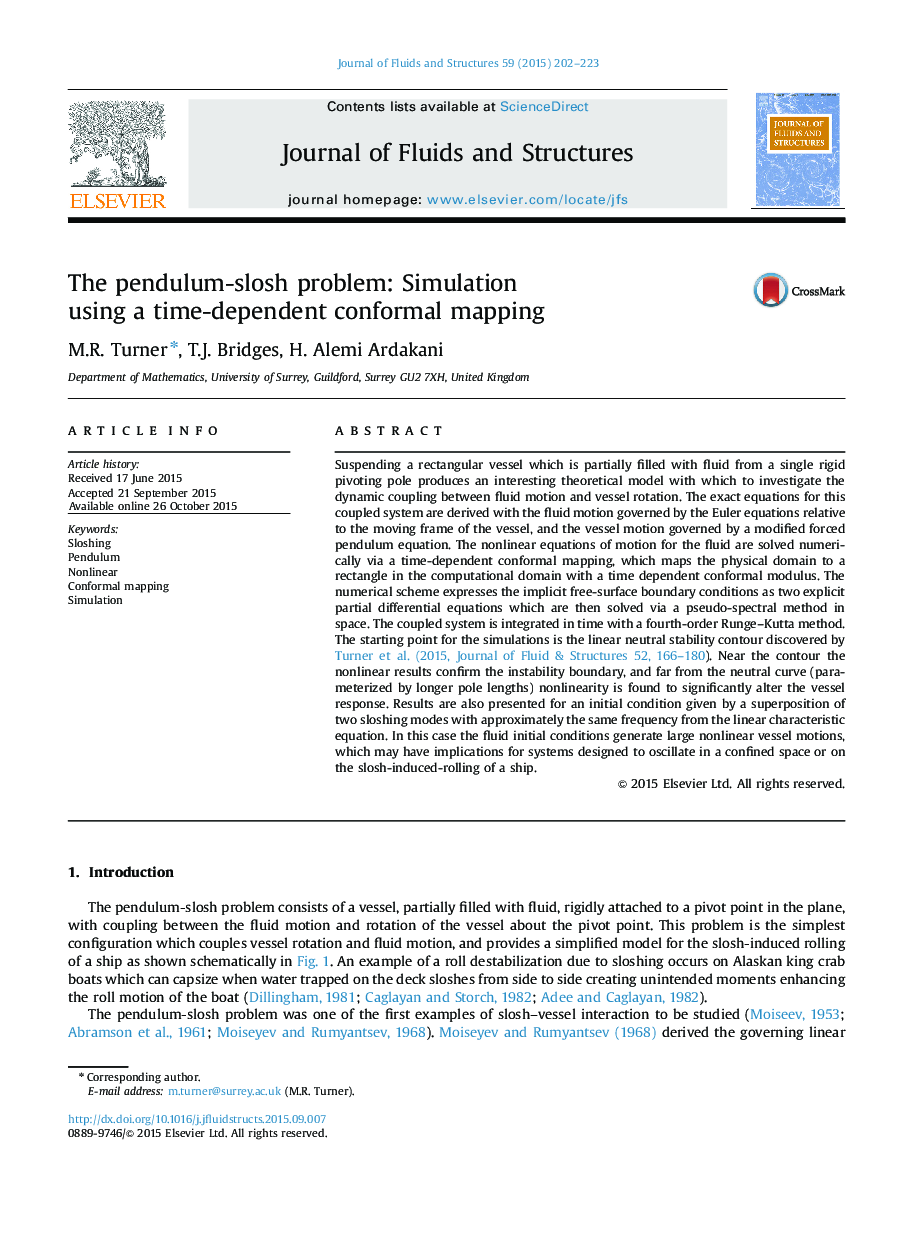| کد مقاله | کد نشریه | سال انتشار | مقاله انگلیسی | نسخه تمام متن |
|---|---|---|---|---|
| 793350 | 1466588 | 2015 | 22 صفحه PDF | دانلود رایگان |

• Fluid sloshing in rectangular vessel coupled to the rotating pendulum motion of the vessel is studied.
• The numerical method uses a conformal mapping so only the solution along the free-surface is calculated.
• Results show the additional fluid motion can enhance the amplitude of the vessel motion.
Suspending a rectangular vessel which is partially filled with fluid from a single rigid pivoting pole produces an interesting theoretical model with which to investigate the dynamic coupling between fluid motion and vessel rotation. The exact equations for this coupled system are derived with the fluid motion governed by the Euler equations relative to the moving frame of the vessel, and the vessel motion governed by a modified forced pendulum equation. The nonlinear equations of motion for the fluid are solved numerically via a time-dependent conformal mapping, which maps the physical domain to a rectangle in the computational domain with a time dependent conformal modulus. The numerical scheme expresses the implicit free-surface boundary conditions as two explicit partial differential equations which are then solved via a pseudo-spectral method in space. The coupled system is integrated in time with a fourth-order Runge–Kutta method. The starting point for the simulations is the linear neutral stability contour discovered by Turner et al. (2015, Journal of Fluid & Structures 52, 166–180). Near the contour the nonlinear results confirm the instability boundary, and far from the neutral curve (parameterized by longer pole lengths) nonlinearity is found to significantly alter the vessel response. Results are also presented for an initial condition given by a superposition of two sloshing modes with approximately the same frequency from the linear characteristic equation. In this case the fluid initial conditions generate large nonlinear vessel motions, which may have implications for systems designed to oscillate in a confined space or on the slosh-induced-rolling of a ship.
Journal: Journal of Fluids and Structures - Volume 59, November 2015, Pages 202–223